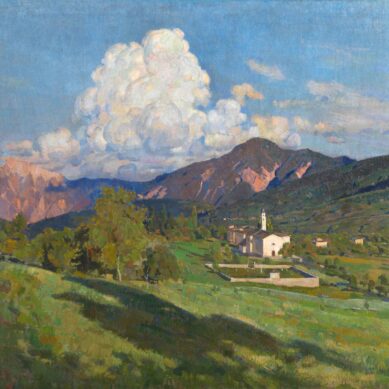You searched
Painter
Evaristo Cappelli
Are you interested in the sales or the purchase of his artworks?
We buy works of this artist
and of other painters and sculptors from the 16th century to the first half of the 20th century
The Berardi gallery offers a free and without obligation service for evaluation of ancient and modern art . To find your way in the art market, very complex and full of nuances, it is better to rely on a professional consultant who can answer fast and concretely to your needs. The clarity of the answers will resolve effectively the need to estimate or sell an asset.
Contact us immediately without commitment
Answers also in 24 hours:
Evaristo Cappelli
Evaristo Cappelli
Evaristo Cappelli was born in Formigine, near Modena, in 1868. He trained at the local Institute of Fine Arts from 1883 to 1889, a pupil of Antonio Simonazzi. His early works, which were still linked to a fully nineteenth-century verism, brought him his first awards: in 1895 he won the Muzzioli prize, a scholarship that enabled him to perfect his art up to the turn of the century.
A loose brushstroke for rural scenes, portraits and views of Modena
In 1896 he painted the Portrait of his sister Laura, which, responding to an elegant formalism, already leaned towards postimpressionist solutions. In this sense, the contribution of Giuseppe Graziosi’s poetics is fundamental, which Evaristo Cappelli welcomed in paintings such as Grape Harvest and Woman Reading, in which the idyll of rural intimacy is combined with a brushstroke conducted with ease and luministic sensitivity, which sometimes leads to pieces of rare executive refinement. It was precisely these characteristics that brought the painter into the circle of the most appreciated and sought-after artists in the Modena area at the beginning of the twentieth century.
Art Nouveau decoration in the Modena area
Constantly present at the Triennials of the Society of Encouragement in Modena, he stands out for his language that recalls the stylistic features of the late nineteenth century, but also flashes of Art Nouveau decorativism, as can also be seen in his work as an illustrator and set designer. In the field of decoration, his work in 1910 in Villa Forghieri in Magreta is particularly memorable, where the floral style is released in the graceful fresco of the vault. Flora and Zephyrus are united in a floating kiss amidst wild flowers and her transparent, billowing dress and his wings, silhouetted against a very clear sky that brings to mind the lightness of Tiepolo’s frescoes.
Despite the fact that in the early years of the twentieth century he was mainly involved in the decoration of palaces and churches in Modena (including the parish church of Castelnuovo Rangone and the grand staircase of the Congregazione di Carità in Modena), he continued to work with easel painting, always devoting himself to country themes, everyday scenes or views of Modena. He was also present at the Promotrici in Genoa, where he exhibited some of his most significant works, including Pasture, Spring (1903), Morning in the mountains, Under the oaks (1904), Little girl at school, Piazzetta dell’orologio in Modena (1905) and Girl from the fileds (1908). One of the last works exhibited was Rural Schoolgirl, presented in Naples in 1937. He worked for many years in the field of decoration and was active until the 1940s, dying in Modena in 1951.
Elena Lago





